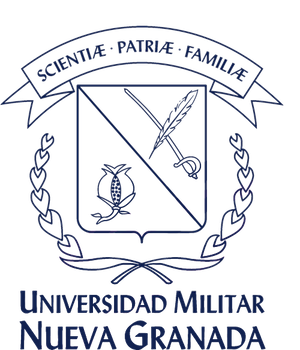Sobre el número de rotación en el círculo y el anillo
Resumen
Uno de los conceptos y herramientas fundamentales para el estudio de la existencia de órbitas periódicas es el número de rotación, que fue introducido por Henri Poincaré hacia el año de 1913, y juega un papel fundamental en la descripción cualitativa de sistemas dinámicos. En este trabajo, se hará una revisión detallada de las propiedades del número de rotación en el círculo y el anillo, y presentaremos algunas aplicaciones a los difeomorfismos Morse-Smale, el flujo billiard y el mapa de retorno geodésico.
Descargas
Referencias bibliográficas
C. Robinson, Dynamical systems, Second edition. New York: CRC, press, 1999, DOI: https://doi.org/10.1201/9781482227871
M. Brin y G. Struck, Introduction to dynamical systems,Cambridge University Press, 2002, DOI: https://doi.org/10.1017/CBO9780511755316
A. Michel y L. Hou y D. Liu, “Stability of Dynamical Systems”, Systems and Control, Birkhauser, 2008, DOI:https://doi.org/10.1007/978-0-8176-4649-3
C. Siegel y K. Moser, Lectures on Celestial Mechanics, Springer, 1971, DOI: https://doi.org/10.1137/1015087.[5] L. Perko, Differential Equations and Dynamical Systems, Springer, 1990, DOI: https://doi.org/10.1007/978-1-4613-0003-8
O. Galor. Discrete Dynamical Systems, Springer, 2007,DOI: https://doi.org/10.1007/3-540-36776-4
M. Hirsch y S. Smale, Differential equations, dynamical systems, and linear algebra, New York: Academic Press, 1974, DOI: https://doi.org/10.1137/1018025
J. Franks y M. Shub, “The existence of Morse-Smale diffeomorphism”, Topology, vol. 20, no. 3, pp.273-290, 1981, DOI: https://doi.org/10.1016/0040-9383(81)90003-3
J. Moser, “Dynamical Systems, Theory and Applications”, Lecture Notes in Physics, Springer, 1975, DOI: https://doi.org/10.1007/3-540-07171-7
R. Devaney, An introduction to chaotic to dynamical systems, Persens Publishing Co, 1999, DOI: https://doi.org/10.1201/9780429280801
G. Birkhoff, Dynamical Systems, American Mathematica Society, 1966, DOI: https://doi.org/10.1007/978-1-4757-3978-7_1
C. Bonatti, “Generic Properties of dynamical system”, CNRS and institud de mathematique de Bourgogne,Francia, 2 de sep 2005, DOI: https://doi.org/10.1016/B0-12-512666-2/00164-4
J. Sotomayor, Licoes de equacoes diferenciais ordinarias, Rio de Janeiro: IMPA, Projeto Euclides, 1979. [14] J. Milnor, Dynamics in one complex variable, Introductory lectures, Institute of Mathematical Sciences, New York: SUNY, 1990, DOI:https://doi.org/10.48550/ar-Xiv.math/9201272
J. Palis y W. Melo, Introducao aos sistemas dinámicos, IMPA: Junio de 1975.
J. Franks, “Rotation number and instability sets”,American mathematical Society, vol. 40, pp. 263-277, 2003, DOI: https://doi.org/10.48550/arXiv.math/0303292
J. Franks, “Rotation vector and fixed points of area preserving surface diffeomorphisms”, Trans. Amer.Math. Soc., vol. 348, pp. 2637-2662, 1996, DOI: http:/www.jstor.org/stable/2155263
J. Franks, “Homology and dynamical systems”, Amer.Math. Soc., vol. 49, pp. 57- 92, 1993, DOI: https://www.ams.org/books/cbms/049/cbms049-endmatter.pdf
J. Franks, “Geodesics on S2 and periodic points of annulus homeomorphisms”, Inventiones Math., vol.108, pp. 403-418, 1992, DOI: https://doi.org/10.1007/BF02100612
J. Franks, “Area preserving homeomorphisms of open surfaces of genus zero”, New York Journal of Math,vol. 2, pp. 1-19, 1996, http://eudml.org/doc/119495
J. Franks, “Periodic points of Hamiltonian surface diffeomorphisms”, Geometry and Topology, vol.7, pp. 713-756, 2003, DOI: https://doi.org/10.2140/gt.2003.7.713
J. Franks, “Periodic points and rotation number for area preserving diffeomorphisms on the plane”,Publications Mathematique de L’ I.M.E.S., vol71, pp. 105-120, 1990, DOI: https://doi.org/10.1007BF02699879
J. Franks, “Regions of instability for non-twist maps”, to appear in Ergodic Theory and Dynamical System, DOI:https://doi.org/10.48550/arXiv.math/9910152
M. Handel, “The rotation set of a homeomorphism of the annulus is closed”, Comm.Math. Phys., vol. 127 no. 2, pp. 339-349, 1990, DOI: https://doi.org/10.1007/BF02096762
M. Herman, “Simple proofs of local conjugacy theorems for diffeomorphisms of the circle with almost every rotation number”, Boletim da Sociedade Brasileira de Matemática, vol. 16, no. 1, pp. 45-83, 1985, DOI: http://doi.org/10.1007/bf02584836
S. Novo y C. Núnez, and R. Obaya, “Ergodic Properties and Rotation Number for Linear Hamiltonian Systems”, Journal of Differential Equations, vol. 148,no. 1, pp. 148-185, 1998, DOI: http://doi.org/10.1006/jdeq.1998.3469
M. Zhang y R. Obaya, “The Rotation Number Approach to the Periodic Fuc caron ik Spectrum”,46. Sánchez Salazar Facultad de Ciencias Básicas ■ Vol. 18(1) Journal of Differential Equations, vol. 185, no. 1, pp. 74-96, 2002, DOI: http://doi.org/10.1006/jdeq.2002.4168
R. Pavani, “A numerical approximation of the rotation number”, Applied Mathematics and Computation, vol. 73, no. 2-3, pp. 191-201, 2002, DOI: http://doi.org/10.1016/0096-3003,%2894%2900249-5
H. Veldhuizen, “On the numerical approximation of the rotation number”, Journal of Computational and Applied Mathematics, vol. 21, no. 2, pp. 203-212,1988, DOI: http://doi.org/10.1016/0377-0427%2888%2990268-3
R. Pavani, “The numerical approximation of the rotation number of planar maps”, Computers and Mathematics with Applications, vol. 33, no. 5, pp.103-110, 1997, DOI: http://doi.org/10.1016/s0898-1221%2897%2900023-0
A. Lambert y R. Limaand y R. Vilela, “Rotation number and Lyapunov exponent in two-dimensional maps”, Physical D: Nonlinear Phenomena, vol. 34, no.3, pp. 336-377, 1989, DOI: http://doi.org/10.1016/0167-2789 %2889%2990261-3
R. Johnson, “Exponential dichotomy, rotation number,and linear differential operators with bounded coefficients”, Journal of Differential Equations,vol. 61, no. 1, pp. 54-78, 1986, DOI: http://doi.org/10.1016/0022-0396%2886%2990125-7
F. Puel, “The rotation number of bounded orbits in a central fix”, Celestial Mechanics, vol. 29, no. 3, pp. 255-266, 1983, DOI: http://doi.org/10.1007/bf01229139
H. Feng y M. Zhang, “Optimal estimates on rotation number of almost periodic systems”, Zeitschrift fuer Angewandte Mathematik und Physik (ZAMP), vol. 57,no. 2, pp. 183-204, 2006, DOI: http://doi.org/10.1007/s00033-005-0020-y
K. Jaroslaw, “Poincaré rotation number for maps of the real line with almost periodic displacement”, Institute of Physics, vol.13, no. 5, pp. 1841-1854, 2000, DOI: http://doi.org/10.1007/s00209-012-1071-3
A. Navas y M. Triestino, “On the invariant distributions of C2 circle diffeomorphisms of irrational rotation number”, Mathematische Zeitschrift, vol.274, no. 1-2, pp. 315-321, 2013, DOI: http://doi.org/10.1088/0951-7715%2F13%2F5%2F320
L. Bates y R. Cushman y E. Savev, “The rotation number and the herpolhode angle in Euler’s top”,Zeitschrift fuer Angewandte Mathematik und Physik (ZAMP), vol. 56, no. 2, pp. 183-191, 2005, DOI: http://doi.org/10.1007/s00033-004-2082-7
R. Johnson y J. Moser,“The rotation number for almost periodic potentials”,Communications in Mathematical Mathematical Physics, vol.90, no.2, pp.317-318, 1983, DOI: http://doi.org/10.1007/bf01205510
M. Bobino, “Lefschetz index for orientation reversing planar homeomorphisms”, Proceeding of the American mathematical society, vol. 130, no 7, pp. 2173-2177,2002, http://www.jstor.org/stable/2699825
I. Pesin, “Caratheodory theory of prime ends”, Siberian Mathematical Journal, vol. 7, no. 5, pp. 868-870,1966, DOI:http://doi.org/10.1007/bf01044491
E. Collingwood y G. Piranian, “The structure and distribution of prime ends”, Archiv der Mathematik, vol. 10, no. 1, pp. 379-386, 1959, DOI: http://doi.org/10.1007/bf0124081
D. Epstein, “Prime Ends”, Proceedings of the London Mathematical Society, vol. s3-42, no. 3, pp. 385-414, 1981, DOI: http://doi.org/10.1112/plms%2Fs3-42.3.385
E. Schlesinger, “Conformal Invariants and Prime Ends”, American Journal of Mathematics, vol. 80, no. 1,pp. 83-102, 1958, DOI: http://doi.org/10.2307/2372822
A. Koropecki y L. Patrice y N. Meysam, “Prime ends rotation numbers and periodic points”, Duke Mathematical Journal, vol. 164, no. 3, pp. 403-472, 2015, DOI: http://doi.org/10.1215/00127094-2861386
V. Ryazanov y S. Volkov “Prime ends in the mapping theory on the Riemann surfaces”, Journal of Mathematical Sciences, vol. 227, no. 1, pp. 81-97, 2017, DOI: http://doi.org/10.1007/s10958-017-3575-1
X. Liao y L.Q. Wang y P. Yu, Stability of Dynamical Systems. Monograph Series on Nonlinear Science and Complexity 5, Elsevier, 2007.
C. Robinson, “Closing stable and unstable manifolds on two spheres”, Proc. Amer. Math. Soc., vol. 41, pp.299-303, 1973, DOI: https://doi.org/10.2307/2038860
V. Ginzburg y Z. Basak, “Hyperbolic fixed points and periodic orbits of Hamiltonian diffeomorphisms, Duke Mathematical Journal, vol. 163, no. 3, pp. 565- 590, 2014, DOI: http://doi.org/10.1215/00127094-2410433
M. Viana, Introducao ao teoría ergódica, Curso de Verao de Recife, IMPA, enero de 2003. [50] G.B Gustafson, “Differential Equations, Linear Algebra and Dynamical Systems (Morris W. Hirsch and Stephen Smale)”, SIAM Review Journal, vol. 18, 1976.
J. Franks, “Some smooth maps with infinite many hyperbolic periodic points”, Transactions of the American Mathematical Society, vol. 226, pp. 175-176, 1997, DOI: http://doi.org/10.1090/S0002-9947-1977-0436221-3
M. Benalili, “Linearization of vector fixed and embedding of diffeomorphisms in flows via Nash–Moser theorem”, Journal of Geometry and Physics, vol. 61,no. 1, pp. 62-76, 2011, DOI: http://doi.org/10.1016/j.geomphys.2010.08.009
M. Benalili, “Lemma on Hyperbolic Fixed Points of Diffeomorphisms”, Russian Mathematical Surveys, vol. 29, no. 2, pp. 236-241, 1974, DOI: http://doi.org/10.1070/RM1974v029n02ABEH003858
De Melo E,“Lectures on one dimensional dynamics”17 Coloquio brasileiro de matemáticas,IMPA.[55] P.Sconzo,“Contribution to the solution of the threebody problem in power series form”, Astronomische Nachrichten, vol. 290, no. 4, pp. 163-170, 1967, DOI:http://doi.org/10.1002/asna.19672900405
F. Diacu, “Poincaré and the Three Body Problem”. By June Barrow Green, Historia Mathematica, vol. 26, no. 2, pp. 175-178, 1999, DOI: http://doi.org/10.1006/hmat.1999.2236
E. Lacomba, “Regularization by surgery in the restricted three body problem”, Journal of Differential Equations, vol. 24, no. 2, pp. 240-252, 1977, DOI:http://doi.org/10.1016/0022-039628772990148-6
R. Easton, “Parabolic orbits in the planar three body problem”, Journal of Differential Equations, vol. 52, no. 1, pp. 116-134, 1984, DOI: http://doi.org/10.1016/0022-0396%2884 %2990138-4
A. Baz, “Particular case of the three-body problem”,Nuclear Physics, vol. 51, pp. 145-154, 1964, DOI:http://doi.org/10.1016/0029-5582 %2864 %2990258-5
W. Glockle, “Studies of the three-body problem”, Nuclear Physics A, vol. 175, no. 2, pp. 337-349, 1971, DOI:http://doi.org/10.1016/0375-9474 %2871 %2990286-7
F. Lanford, “Functional equations for circle homeomorphisms with golden ratio rotation number”, Journal of Statistical Physics, vol. 34, no. 1-2, pp. 57-73,1984, DOI: http://doi.org/10.1007/bf01770349
D. Birkhoff, “Proof of Poincaré geometric theorem”,Trans. Amer. Math. Soc., vol. 14, pp. 14-22, 1913, DOI: https://doi.org/10.2307/1988766
G. Hall. “Some problems on dynamics of annulus maps Hamiltonian Dynamical Systems”, Contemporary Mathematics. Amer. Math. Soc, vol. 81, 1987.
Z. Xia, “Area preserving surface diffeomorphisms”, Nacional Science Foundation, Illinois, 1996.
E. Aurell y C. Itzykson, “Rational billiards and algebraic curves”, Journal of Geometry and Physics, vol. 5, no. 2, pp. 191-208, 1988, DOI: http://doi.org/10.1016/0393-0440 %2888 %2990004-6
S. Hyewon y J. Bang y J. Park; S. Jeon, “Billiards game with haptic interface”, Computer Animation and Virtual Worlds, vol. 21, no. 5, pp. 523-530, 2010, DOI:http://doi.org/10.1002/cav.337
B. Lubachevsky, “How to simulate billiards and similar systems”, Journal of Computational Physics vol. 94, no. 2, pp. 255-283, 1991, DOI: http://doi.org/10.1016/0021-9991%2891%2990222-7
N. Chernov, “Topological entropy and periodic points of two-dimensional hyperbolic billiards”, Functional Analysis and Its Applications, vol. 25, no. 1, pp. 39-45, 1991, DOI: http://doi.org/10.1007/bf01090675
M. Rychlik, “Periodic points of the billiard ball map in a convex domain”, J. Differential Geometry, vol. 30,pp. 191-205, 1989.
A. Canino, “Existence of a closed geodesic on p-convex sets”, Annales de l’Institut Henri Poincare (C) Non-Linear Analysis, vol. 5, no. 6, pp. 501-518, 1991, DOI: http://doi.org/10.1016/s0294-1449%2816%2930333-x
A. Masiello, “On the Existence of a Closed Geodesic in Stationary Lorentz Manifolds”, Journal of Differential Equations, vol. 104, no. 1, pp. 48-59, 1993, DOI:http://doi.org/10.1006/jdeq.1993.1063

Derechos de autor 2023 Revista Facultad de Ciencias Básicas

Esta obra está bajo una licencia internacional Creative Commons Atribución-NoComercial-SinDerivadas 4.0.











